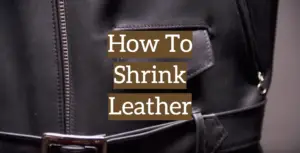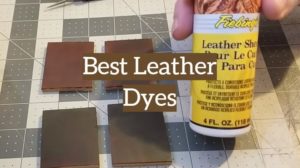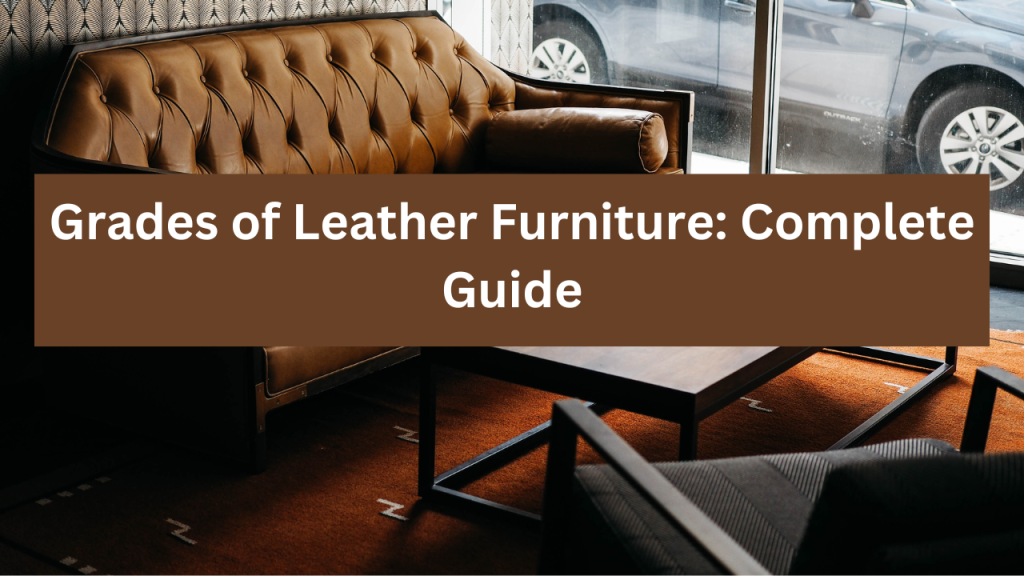
Introduction
Leather furniture, an emblem of luxury and comfort, has graced homes and offices for centuries. With varied grades available, the choice becomes both challenging and fascinating. Here, we unpack these grades, guiding you in your quest for the perfect leather piece.
The Origin: Bovine Hide and Beyond
Every leather piece starts its journey as rawhide, primarily from bovine sources. The transformation from rawhide to finished leather furniture encompasses various processes that yield diverse grades, each with distinct features.
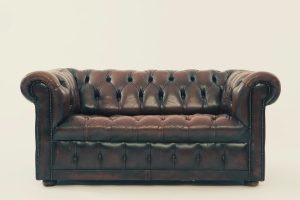
The Grades in Detail
Full Grain Leather
Full grain leather stands proud at the zenith of leather grades. It celebrates the leather’s history, with natural scars and imperfections displayed openly. This unaltered state not only provides a rich tactile experience but also promises unparalleled durability. Furniture made from full grain leather is resistant to tears, wears, and even accidental spills. Over the years, it develops a charismatic patina, enhancing the ambiance of any room.
Top Grain Leather
Slightly refined, top grain leather undergoes minimal surface sanding to remove blemishes. The result is a homogenous look, while retaining substantial durability. Although not as breathable as its full grain counterpart, top grain leather is a favorite in luxury settings due to its consistent texture and adaptability.
The Marvel of Natural Marks
Natural marks are testaments to leather’s authenticity. They narrate tales of the wilderness, challenges faced, and battles won by the animal. Furniture retaining these marks doesn’t just serve a functional purpose; it adds a story to your living space.
Breathability and Its Significance
Imagine a warm day, and you’re lounging on your leather couch. A breathable leather ensures comfort, preventing the sticky discomfort often associated with synthetic materials. Full grain leather, with its intact surface, offers this breathability, promising year-round comfort.
Patina: Leather’s Aging Grace
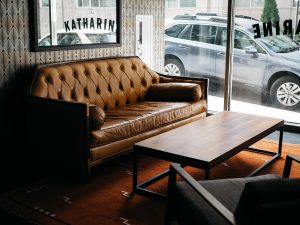
Certain leather grades, especially full grain, age like fine wine. They develop a sheen known as patina, giving furniture an antique look. This naturally occurring process is a testament to genuine leather, making your furniture an artifact that gains value with time.
Aniline Dye Process and Its Impact
The dyeing technique plays a pivotal role in leather’s appearance. The aniline dye process, reserved for the finest leathers, immerses them in transparent dyes. This process retains the natural grain while ensuring a uniform color, resulting in a piece that feels luxurious to the touch and is a treat to the eyes.
Why Luxury Brands Opt for Premium Grades
Be it the tactile experience, the aesthetic appeal, or the promise of durability, premium leather grades are the first choice for luxury brands. Whether it’s elite handbags or high-end furniture, the touch of full grain or top grain leather is unmistakable.
Durability and Resistance Factors
One of the compelling reasons homeowners opt for leather furniture is its resilience. Top-tier leathers, with their thick surface, guard against daily mishaps, be it a coffee spill or scratches from a pet.
Caring for Your Leather Furniture
Each leather grade, with its unique properties, demands distinct care. While some might thrive with just a wipe, others may require regular conditioning. Understanding and catering to these needs ensures your leather furniture’s longevity.
Concluding Thoughts
Choosing leather furniture is more than just a purchase; it’s an investment in luxury, comfort, and style. By understanding the grades and their individual offerings, you can select a piece that complements your space and resonates with your taste.
Leather Grades at a Glance
| Grade | Key Features | Ideal Settings |
|---|---|---|
| Full Grain Leather | Retains natural marks, develops patina, high durability | Heritage homes, luxury spaces |
| Top Grain Leather | Homogeneous texture, durable, versatile | Modern homes, corporate offices |
Frequently Asked Questions (FAQs) about Leather Furniture Grades
What is the main difference between Full Grain and Top Grain Leather?
Full Grain Leather retains the entire natural grain and has no alterations on its surface, allowing for a unique, authentic look with visible imperfections. In contrast, Top Grain Leather undergoes slight sanding to remove surface imperfections, giving it a more uniform appearance.
How do I recognize genuine leather furniture from synthetic variants?
Genuine leather typically has a distinctive smell and develops a natural patina over time. It also has a unique texture compared to synthetic variants. Checking the product label and manufacturer’s documentation can also provide clarity.
Is breathable leather better for warmer climates?
Yes, breathable leather like Full Grain Leather offers better air circulation, making it comfortable even in warmer temperatures. It ensures you don’t experience the sticky discomfort that’s often associated with non-breathable materials.
How often should I condition my leather furniture?
The frequency of conditioning depends on the leather grade and usage. Generally, conditioning once every 6-12 months should suffice for most leather grades. Always check manufacturer’s instructions or consult with a leather crafter for specific guidance.
Why is patina considered valuable in leather furniture?
Patina is a natural sheen that develops on high-quality leather over time. It adds an antique, rich look to the leather, enhancing its beauty and showcasing its authenticity. It’s a sign of aging gracefully and is especially treasured in vintage or heritage settings.
Can I use regular cleaning products on my leather couch?
It’s best to avoid generic cleaning products. Many chemicals can harm leather, stripping it of natural oils. Always use products specifically designed for leather care or consult manufacturer’s instructions before applying anything.
Does higher grade mean the leather will last longer?
Higher grades like Full Grain and Top Grain are generally more durable and resistant to wear and tear. However, the longevity of leather also depends on factors like maintenance, usage, and environmental conditions.

